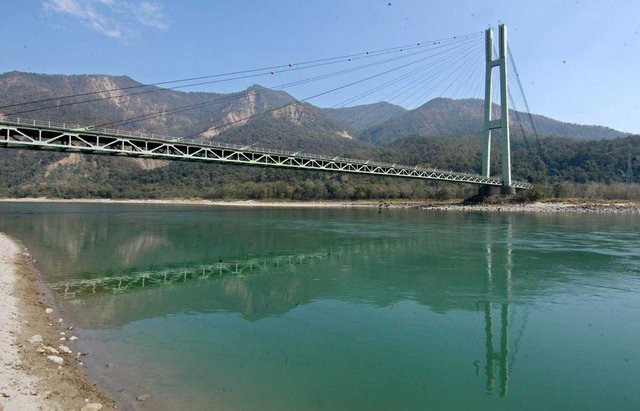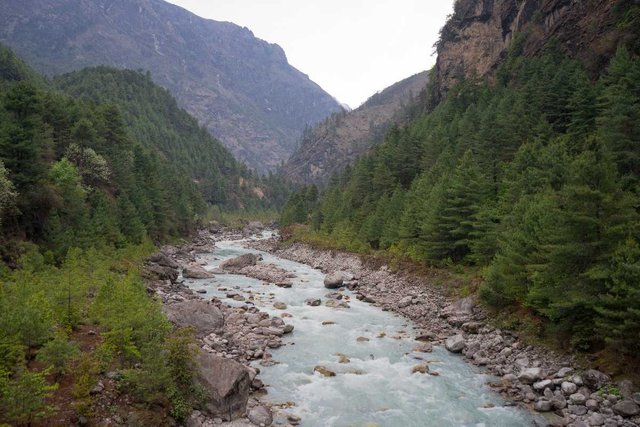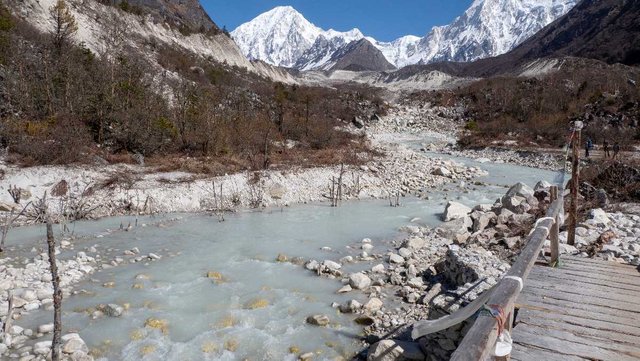Nepal is a land-locked country that is relatively small in size and area, but it is home to several rivers. These rivers of Nepal are undoubtedly beautiful additions to the splendid scenic landscape of the mountain nation. Besides the many advantages of the rivers, including power generation and irrigation, the main tributaries of Nepal are excellent flag bearers of water tourism and adventure.
Here is taking a look at the different rivers of Nepal that offer the best panoramas:
- The Karnali

The Karnali is one of the central and longest rivers of Nepal, originating from the Tibetan plateau near the Manasarovar Lake. Often called the ‘Wild West’, the 513-mile river flows through most of west Nepal. The Karnali basin is where a few of Nepal’s most beautiful national parks are situated. The Shey Phoksundo National Park, Rara National Park and Bardia National Park are the main protected areas along the river.
River Highlights
.Karnali is also a significant source of cheap hydroelectricity to the regions of western Nepal. Home to different dolphin
species, the popular adventure activities on the Karnali include white water rafting, angling and fishing.
.The main tributary of Karnali is the Bheri that originates from the Dolpo region. A beautiful white water rafting river, the
Bheri is a perfect adventure zone for those looking to get away from the crowds. The Thuli (big) and Sani (small) are its
main tributaries that meet at Ramna Ghat. The clear waters and sandy beaches make the Bheri River an attraction for
nature and adventure lovers.
.The other tributaries of the Karnali, are the Humla Karnali, Mugu Karnali and Seti. The Seti too is a great river to traverse
the more accessible rapids and enjoy kayaking and rafting.
.The Karnali finally meets the Sharda River in India at Brahmaghat. Together they form the Ghaghra River that flows over
the northern plains of India.
- Kosi or Koshi

Kosi shared with India and China, flows for a total of 450 miles. Meandering along the southern slopes of Nepal, Kosi is also called the Saptakoshi because of its seven main tributaries. Each of these tributaries are excellent river systems abounding in various adventure activities coupled with stunning scenic views. Interestingly, the Kosi is also called the ‘Sorrow of Bihar’ once it enters India due to its high tendency of flooding. Although prone to floods, the Kosi in the highlands of Nepal amongst the pristine beauty of the Himalayas is an adventure magnet.
River Highlights
.The Sun Kosi, Tamor River and Arun River, tributaries of the Kosi are well-known for various river adventures.
.The Sun Kosi or the River of Gold is one of the most famous rivers for white water rafting and kayaking. Its picturesque
landscapes also make it accessible for camping.
.Sun Kosi features amongst the top 10 places in the world that are famous for white water rafting.
.The mineral deposits sparkle on the river bed, and the several white beaches are excellent as stopovers.
.Bhote Kosi, a tributary of the Sun Kosi, is also an excellent destination for bungee jumping along with river expedition
activities.
.The BhoteKoshi waterfall is the highlight for canoeing and rafting enthusiasts.
.The Tamor River, on the one hand, offers splendid views of the Kanchanjunga along with being a right spot for
kayaking.
.On the other hand is the Dudh Kosi, a tributary of the Sun Kosi, which is a run off from the mighty Everest itself and a
busy rafting route.
.Tamakoshi, Likhu Khola and Indravati Rivers are some of the other tributaries of the Sun Kosi.
- Gandaki

Gandaki River is also known as Narayani, and its river system lies in between the Karnali basin on the west and Kosi river system on the east. The river is also called Sapta-Gandaki because of its seven main tributaries that together form the Gandaki basin. The branches of Gandaki are famous rivers of Nepal that network together to create vital hydropower generation, as well as, various breathtaking natural features. One of its tributaries, the Kaligandaki creates a deep gorge called the Kali Gandaki Gorge or Andha Galchi. This gorge is one of the deepest in the world, forming the fantastic Rupse Waterfall crashing from a height of 300m. Along the north of the Mahabharat Range on the Kaligandaki is Nepal’s largest hydro-power project.
River Highlights
. At Chitwan, the Kaligandaki converges with another vital tributary of the Gandaki, the Trishuli.
. Named after the legend of Shiva, the Trishuli is believed to have been created by his trident. Easily accessible from
Kathmandu and Pokhara, the Trishuli River is a popular river rafting destination. The Budi Gandaki flows into the
Trishuli and is also often the starting point to rafting the Trishuli.
. With exhilarating gorges, grand rapids, as well as, many manageable sections, the Trishuli River is often crowded with
both experienced and beginner rafters.
. The Marsyangdi with its alluring mountain scenery is a tributary of the Gandaki and is considered amongst the best for
river rafting.
. The Annapurna Conservation Area and Sanctuary are the added attractions which can be trekked after enjoying an
exciting rafting experience.
. The Madi and Seti Gandaki, both tributaries of the Gandaki are becoming the top destinations for water tourism.
Rafting from the Byas Cave to Gaighat over 2/3 days is viral amongst tourists visiting Kathmandu and Pokhara.